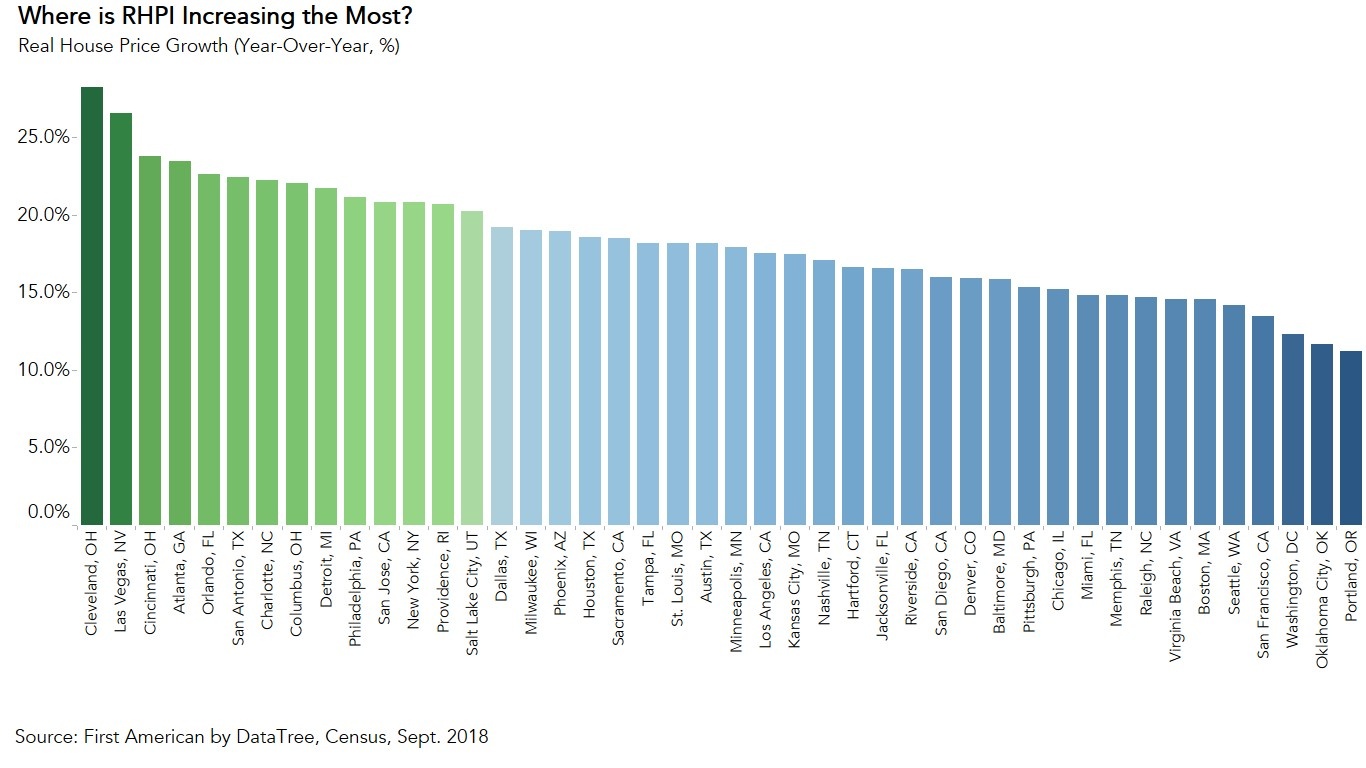In September, all three of the key drivers of the Real House Price Index (RHPI), household income, mortgage rates, and an unadjusted house price index, increased compared with a year ago. When household income rises, consumer house-buying power increases. When mortgage rates and house prices increase, consumer house-buying power decreases. The 30-year, fixed-rate mortgage and the unadjusted house price index increased by 0.8 and 7.5 percent respectively. Even though household income increased 2.9 percent since September 2017 and boosted consumer house-buying power, the Real House Price Index increased 15.3 percent compared to last September, the highest yearly growth rate since 2014.
Rising mortgage rates impact both housing supply and demand, limiting supply by reducing the propensity of sellers to sell and flattening demand by reducing consumer house-buying power. For home buyers, the only way to mitigate the loss of affordability caused by a higher mortgage rate is with an equivalent, if not greater, increase in household income.
“Without stronger household income growth, rising mortgage rates will continue to impede consumer house-buying power, reducing affordability.”
The jump in mortgage rates reduced house-buying power by $36,000 since September 2017. Over the same period, household income growth increased consumer house-buying power by $10,000. The net effect? Overall consumer house-buying power fell by $26,000 in September compared with a year ago. At the moment, rising mortgage rates are winning the buying power tug-of-war with rising household incomes -- the pace of household income growth is not sufficient to fully offset the change in mortgage rates.
Where is Affordability Declining the Most?
As the age-old adage goes, housing is all about “location, location, location.” Affordability is no different. The five markets with the highest year-over-year growth in the RHPI are:
- Cleveland, OH (+28.2 percent)
- Las Vegas, NV (+26.6 percent)
- Cincinnati, OH (+23.8 percent)
- Atlanta, GA (+23.4 percent)
- Orlando, FL (+22.6 percent)

At first glance, these markets don’t seem to have much in common. Upon closer inspection, however, all five markets had household income growth below the national average of 2.9 percent. Orlando uniquely experienced a decline in household income of 0.4 percent compared with a year ago. The importance of household income growth’s ability to mitigate the loss of affordability from a rising mortgage rate is clear. Without stronger household income growth, rising mortgage rates will continue to impede consumer house-buying power, reducing affordability.
For the full analysis of affordability, the top five states and markets with the greatest increases and decreases in real house prices, and more, please visit the Real House Price Index.
The RHPI is updated monthly with new data. Look for the next edition of the RHPI the week of December 17, 2018.
Sources:



